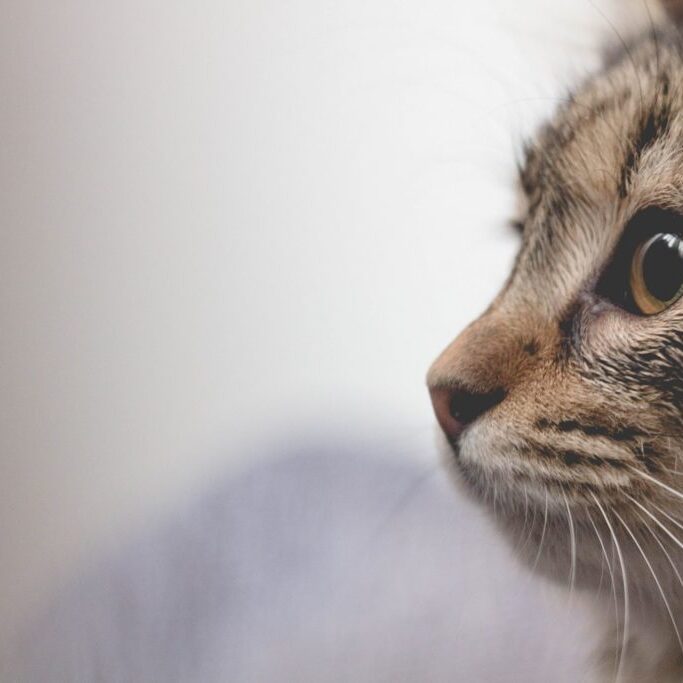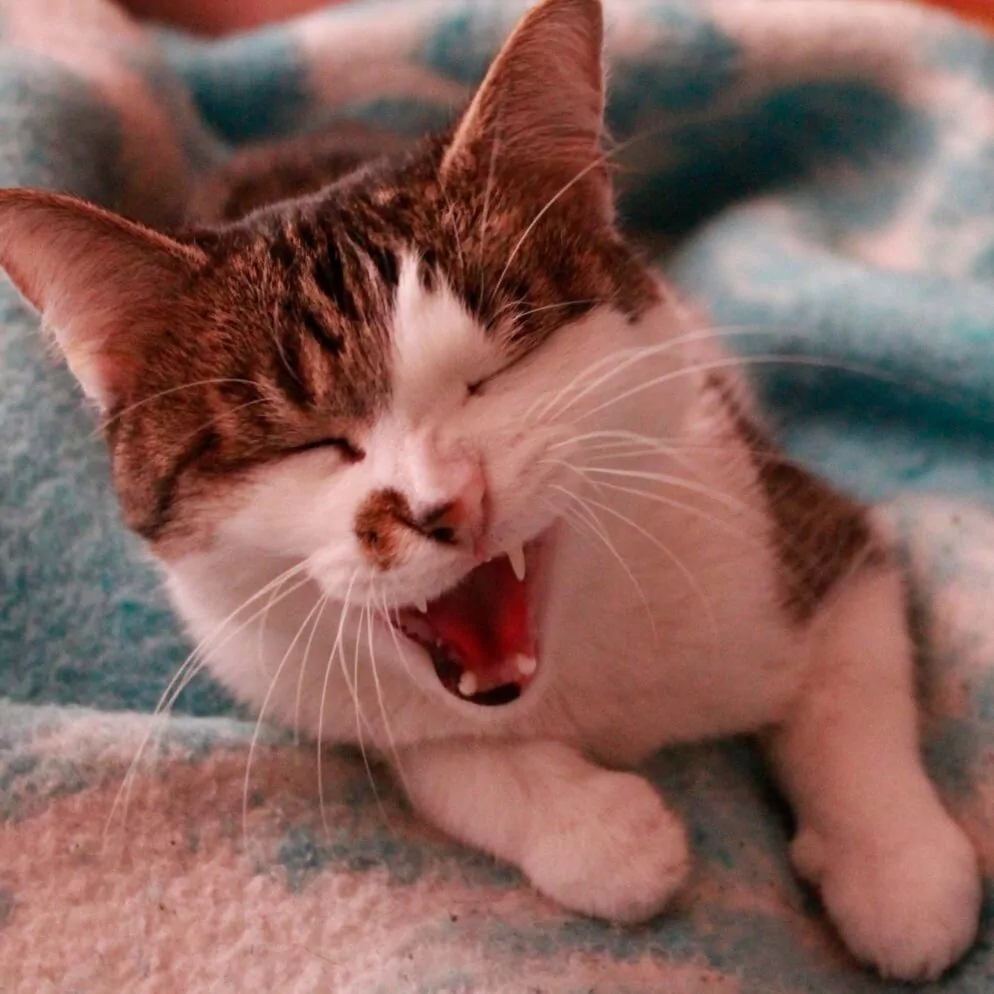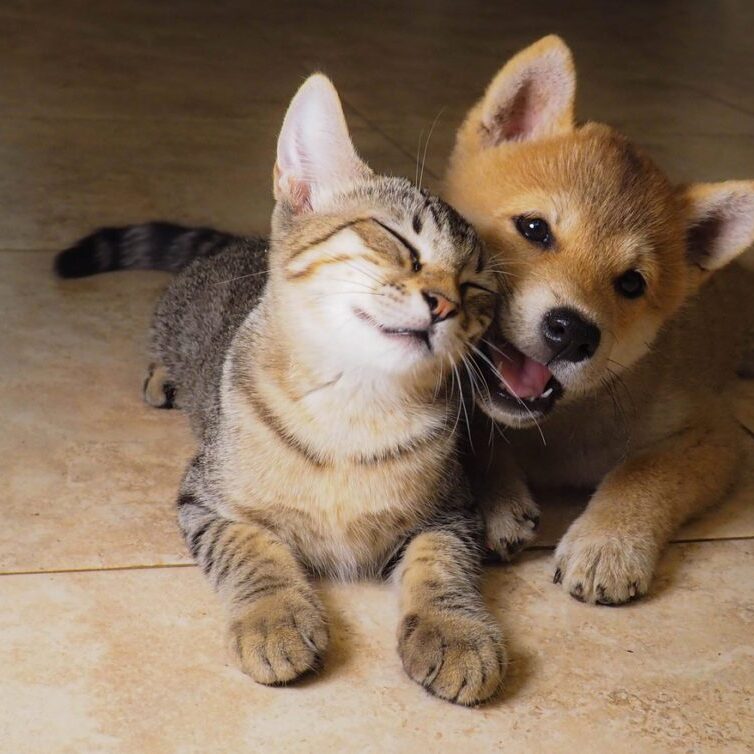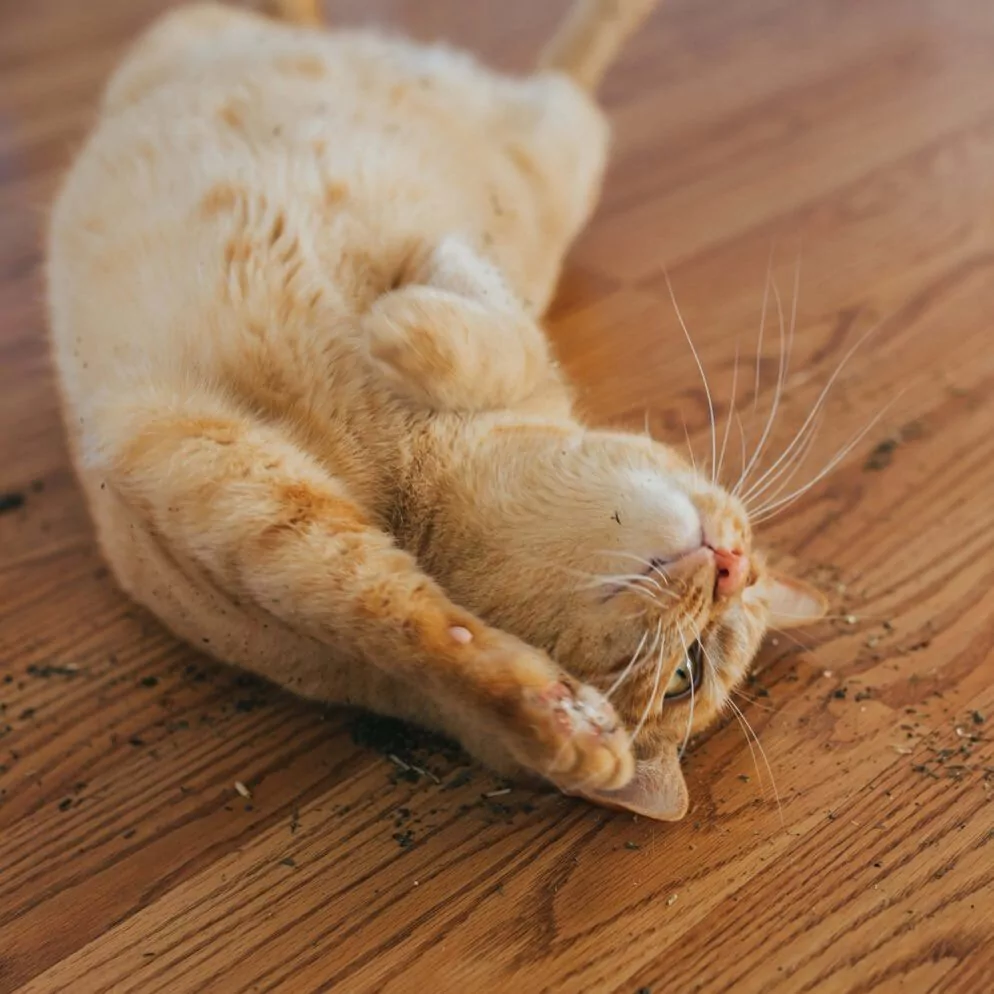Behavior & Symptoms
Why Do Cats Purr?

I do not always see Casey, my 7-year-old ginger cat – approach me and then gently leap on the sofa to sit on my lap. But I can always hear him even when he does not emit a single mew.
Casey purrs with bravado – loudly and steadily. He sounds like a Mack truck in fourth gear. When he purrs close to my ear on the sofa, I sometimes have to increase the volume on the TV remote to hear what the actors are saying on a show. He purrs steadily – even through the commercials.
This is not the case, however, with Rusty, Casey’s younger brother, who is also a ginger cat. Rusty, age 2, is super sweet and craves affection. He leaps in my lap and instantly starts delivering soft eye winks at me. But the only way I can determine that he is contentedly purring is by placing my index finger under his chin to feel the soft, subtle vibrations. He seems to purr in silence – or at least at a volume my humble human ears cannot detect.
“Purring starts days after birth,” says Lisa Radosta, DVM, DACVB, a board-certified veterinary behaviorist who operates the Florida Veterinary Behavior Service in West Palm Beach, Florida. “In other words, cats are born with this ability.”
Dr. Radosta knows this firsthand with her cat, Chewie, a black cat except for some white hairs on what she describes as his “big” belly.
Purring Among Wildcats
“Chewie’s purring is very loud. He puts his ears to the side and half closes his eyes often when he purrs,” she adds. “Domestic cats aren’t the only cat species which purr. The bobcat, cheetah, lynx and puma also purr.”
Big cats in the Pantherinae subfamily within the family Felidae, such as lions, tigers, jaguars and leopards, can’t purr. But they do produce mighty and menacing roars.
Some cats, like my mellow senior cat, Mikey, age 16, seem to choose not to purr. It doesn’t mean that non-purring cats are not happy or content. These cats just may prefer to converse through body language, facial expressions, and vocalizations.
Purring Mechanics
Let’s dive into how cats are capable of making this sound. It starts at the tippy top – inside the cat’s brain. The brain sends out neurological messages to the muscles in the larynx to vibrate. Cats produce purring sounds by using their diaphragms to push air back and forth across vibrating nerves in the larynx, more commonly known as the voice box.
Cats purr at frequencies between 25 and 150 Hertz in a steady cadence. One Hertz equals one vibration. When we hear a sound, we are sensing the vibrations in the air and the number of these vibrations per second is known as the frequency and is measured in Hertz.
So, that means a cat can purr up to 150 vibrations per second. That’s super-fast!
Scientists and veterinarians seem to agree on the mechanics of how a purr is produced, but why a cat initiates the act of purring remains up for debate. Leading veterinarians and scientists offer these explanations:
- A cat makes a voluntary decision to make the purr sounds by cuing the body’s nervous system into action.
- Purring is triggered when a cat experiences pleasure or pain by releasing feel-good brain chemicals called endorphins.
A study published in Animals in June 2020 centered around how a group of cats recognized and reacted to people acting angry and happy. Researchers theorize that the study shows that cats develop socio-cognitive abilities to adapt to emotions displayed by people who they live with and have a strong bond with.
They went on to say that cats purr in social contexts with people and also purr to communicate their feelings of contentment, hunger, stress and pain.
Cats of all ages can lose their ability to purr if they develop laryngeal paralysis. Laryngeal paralysis occurs when cartilage on one or both sides of the larynx cannot open and close properly. Fortunately, this is a rare condition in cats and is usually treated with tranquilizers and corticosteroids for mild cases and surgery if there is a severe airway obstruction.
Good Vibrations
It seems we are only scratching the surface as to the many reasons why cats purr. Cats purr when they are happy, but they also purr to communicate and, potentially, as a way to self-heal.
“Adult cats purr when they are interacting with people, objects or animals that they love or doing something that feels good, such as rolling or rubbing,” says Dr. Radosta. “Purring can be an ‘ask’ for help. Your cat may be hungry or want your attention.”
For those of you who regard your cat as your BFF – that’s best feline friend — Dr. Radosta points out research has indicated that you may become skilled in deciphering your cat’s purr intentions.
“Astute pet parents can tell the difference between their cat’s purrs with more meow-like sounds in the purrs which are intended to solicit food when compared to purrs consistent with happiness,” she says.
You know that affectionately petting your cat can launch his purring serenade. But you can also play a vital role in reinforcing your cat’s purring behavior.
“If the pet parent pays attention to when his or her cat when he purrs, he is likely to repeat the behavior in the future,” she says. “In other words, cats are born with this ability to purr, but the pet parent can reinforce or punish it to change its frequency.” Not that anyone would want to punish a purr!
Purring Is Good for Your Health
Purring can also do a human body good. The soothing sound can help lower stress and blood pressure in people who pet their cats, according to research by Leslie A. Lyons, Ph.D., endowed professor who runs the Feline Genetics and Comparative Medicine Laboratory at the University of Missouri.
The purr between a kitten and an adult cat is also powerful. Because kittens are born blind and deaf, Dr. Radosta says momma cats use purring to lure their kittens closer to keep them safe and provide them with needed nourishment. But even newborn kittens may purr back.
“It may be a way to communicate the need to continue to allow nursing as Mom will be able to hear and feel the purr,” she says. “The kitten is saying, ‘Hey, I am still here’ or ‘Don’t move!’ or ‘I love this!’” which is to solicit help or care from Mom.”
The Flipside of Purring
Purring doesn’t always equate to feline happiness or bliss.
“Cats sometimes purr when they are afraid, such as during a veterinary visit,” she says. Cats may also purr when they are upset, sick, injured or dying as a self-calming mechanism.”
Twice, I have experienced beloved cats purring while taking their final breaths. One involved Callie, my calico, who lived to be 15. In her final year, she faced serious kidney issues that medication could no longer slow down or reverse. Her health quickly deteriorated. While saying goodbye to Callie as my veterinarian injected her with the euthanasia medication to render her unconscious and stop her heart, I will never forget her final purr.
Finally, purring vibrations may be downright healing. Studies suggest that the purring vibrations may stimulate muscle growth and flexibility as well as assist in treating pain plus wound and bone fracture healing.
In an article published in Scientific American, Dr. Lyons writes, “Because cats have adapted to conserve energy via long periods of rest and sleep, it is possible that purring is a low-energy mechanism that simulates muscles and bones without a lot of energy.”
Take the Purring Challenge
Purring is certainly a feat many household cats can effortlessly perform, but I challenge you to replicate those velvety vibrations. I am betting that it just may be easier for you to try to quickly say, “toy boat” 10 times fast without getting tongue tied.
Why? We humans are not capable of purring like cats. Our feline friends are quite capable of steadily purring while inhaling and exhaling.
Don’t believe me? Take a quick pause from reading this prose and try purring right now. See? You will discover that you can easily make the purr sound while exhaling, but not while inhaling.
And the final score reads: Cats 1. Humans 0.
For whatever reason your cat purrs and to what sound level, count yourself fortunate. Your feline may just be helping you be happy and healthy. I know I am blessed to have my loud-purring BFF Casey!
Resources/For More Information
https://www.mdpi.com/2076-2615/10/7/1107
https://www.loc.gov/everyday-mysteries/item/why-and-how-do-cats-purr/
https://ryortho.com/breaking/is-there-healing-power-in-a-cats-purr/
Did you find this helpful? Share it!
About VetScoop
Pets make our lives better. At VetScoop, we’re on a mission to return the favor by giving you access to trustworthy, science-based information so you can provide the best possible care for your pets.
Related Articles We Think You'd Like





